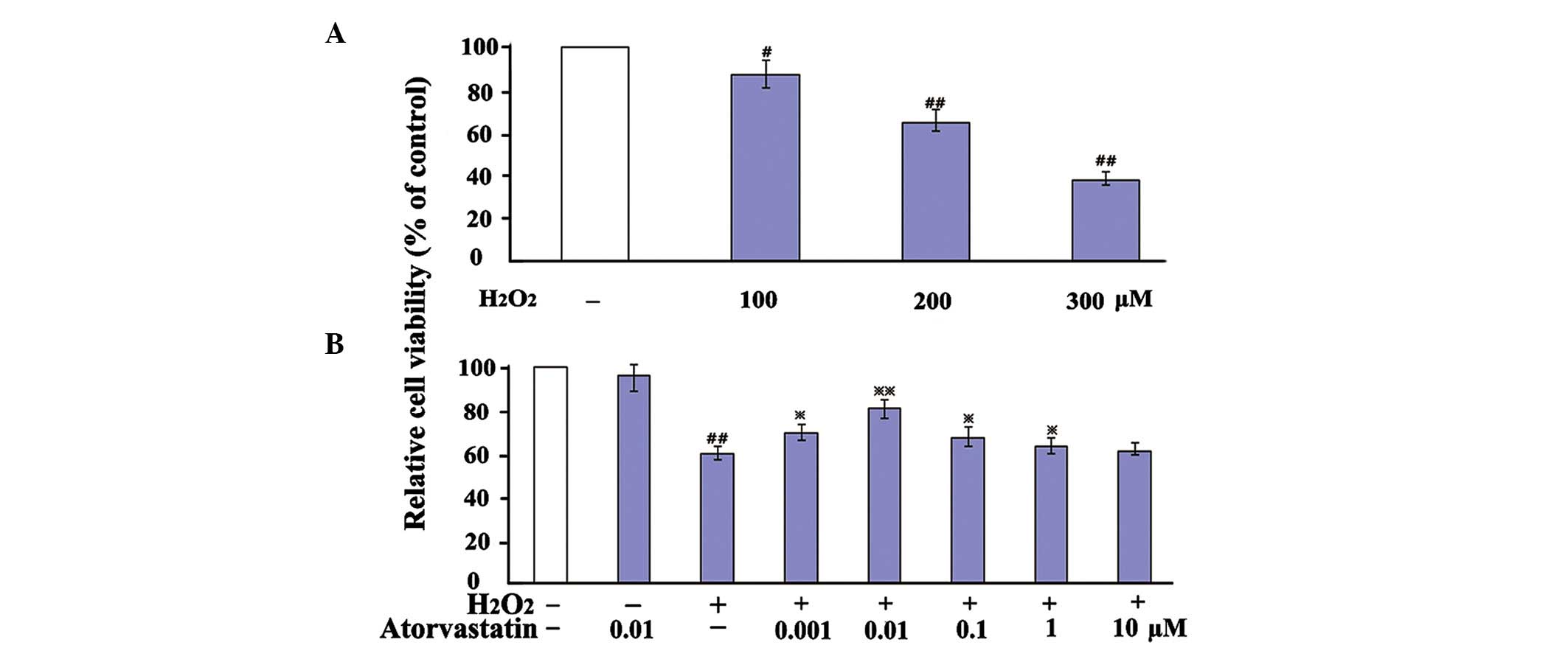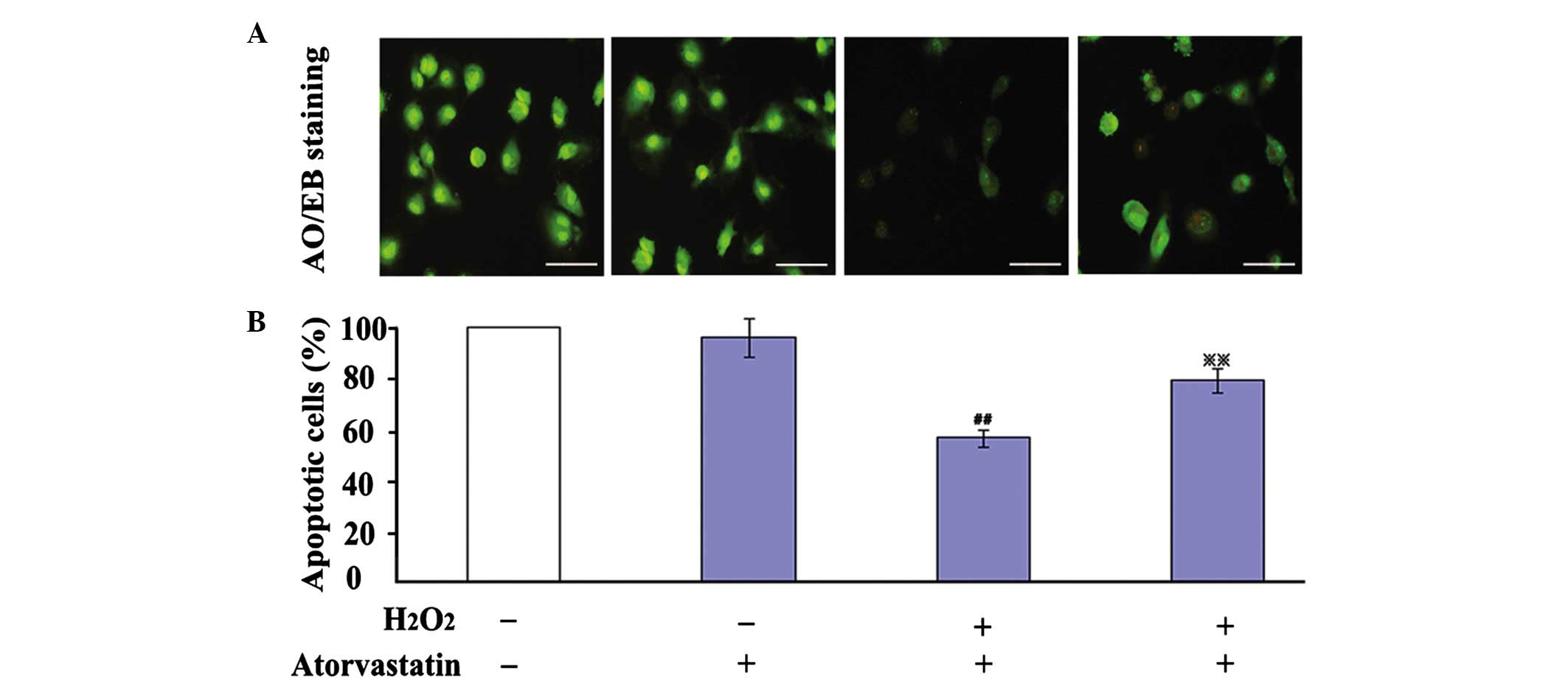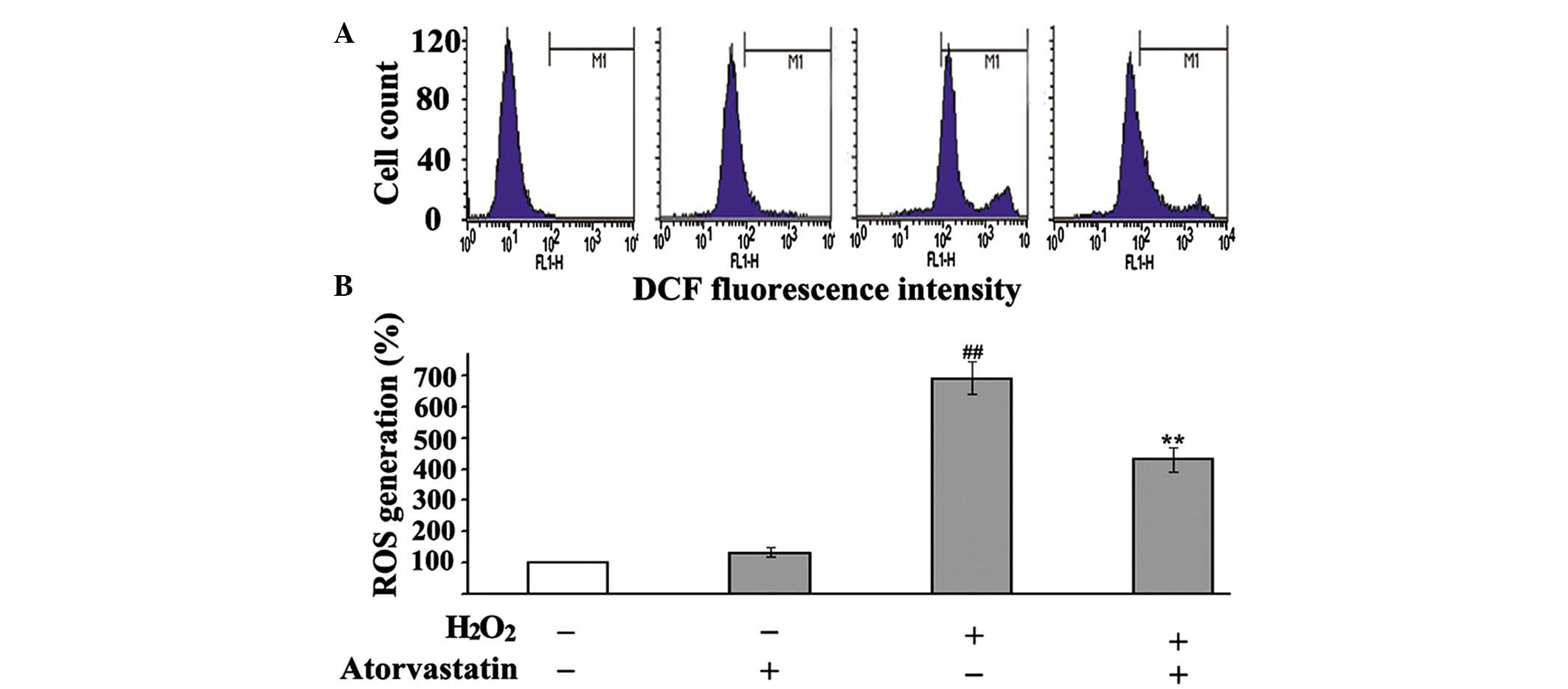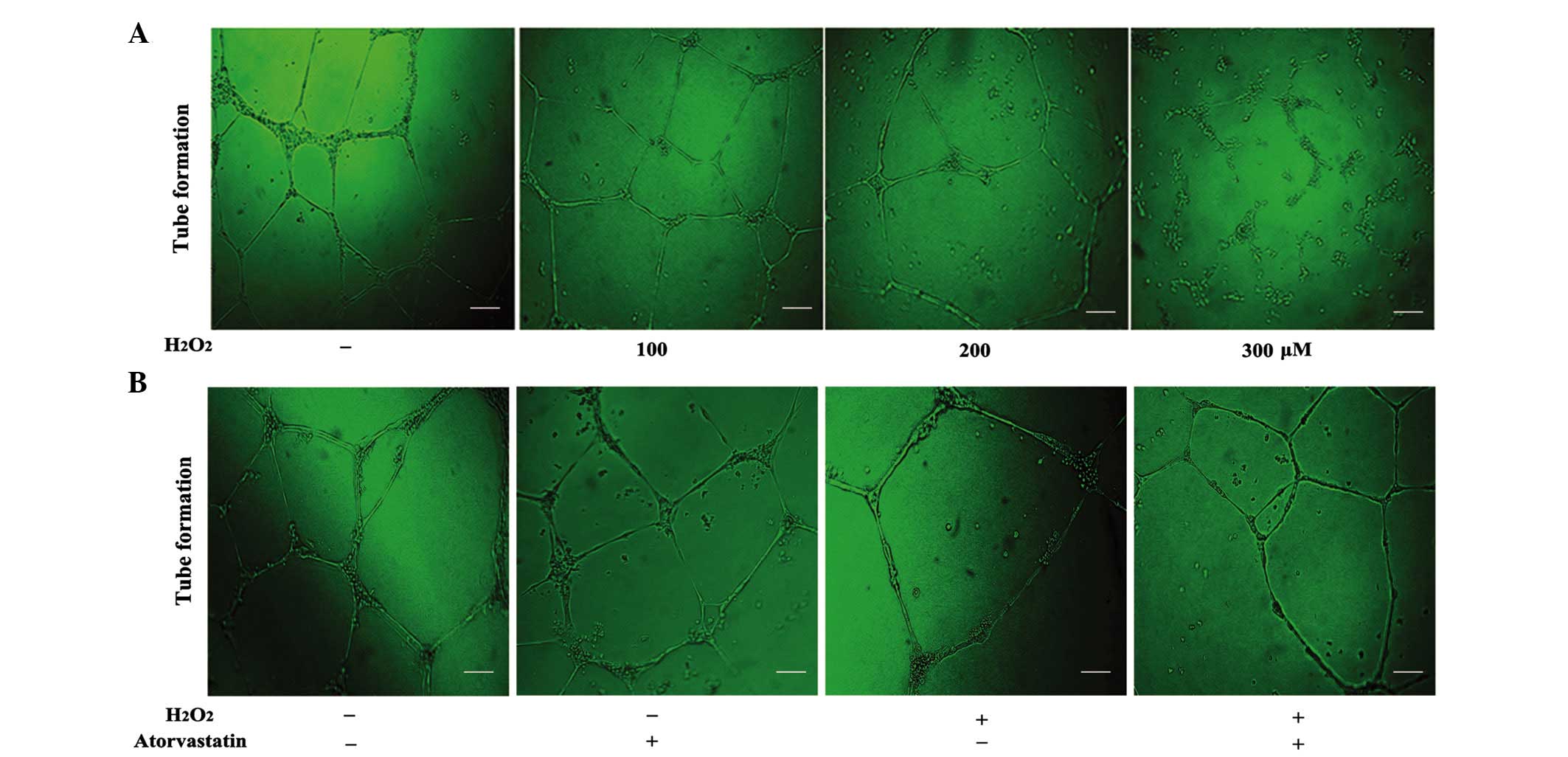|
1
|
Rajendran P, Rengarajan T, Thangavel J,
Nishigaki Y, Sakthisekaran D, Sethi G and Nishigaki I: The vascular
endothelium and human diseases. Int J Biol Sci. 9:1057–1069. 2013.
View Article : Google Scholar : PubMed/NCBI
|
|
2
|
Risau W: Mechanisms of angiogenesis.
Nature. 386:671–674. 1997. View
Article : Google Scholar : PubMed/NCBI
|
|
3
|
Asahara T, Murohara T, Sullivan A, Silver
M, van der Zee R, Li T, Witzenbichler B, Schatteman G and Isner JM:
Isolation of putative progenitor endothelial cells for
angiogenesis. Science. 275:964–967. 1997. View Article : Google Scholar : PubMed/NCBI
|
|
4
|
Kässmeyer S, Plendl J, Custodis P and
Bahramsoltani M: New insights in vascular development:
Vasculogenesis and endothelial progenitor cells. Anat Histol
Embryol. 38:1–11. 2009. View Article : Google Scholar
|
|
5
|
Huang L, Hou D, Thompson MA, Baysden SE,
Shelley WC, Ingram DA, March KL and Yoder MC: Acute myocardial
infarction in swine rapidly and selectively releases highly
proliferative endothelial colony forming cells (ECFCs) into
circulation. Cell Transplant. 16:887–897. 2007. View Article : Google Scholar
|
|
6
|
Lee JH, Lee SH, Yoo SY, Asahara T and Kwon
SM: CD34 hybrid cells promote endothelial colony-forming cell
bioactivity and therapeutic potential for ischemic diseases.
Arterioscler Thromb Vasc Biol. 33:1622–1634. 2013. View Article : Google Scholar : PubMed/NCBI
|
|
7
|
Schwarz TM, Leicht SF, Radic T,
Rodriguez-Araboalaza I, Hermann PC, Berger F, Saif J, Böcker W,
Ellwart JW, Aicher A and Heeschen C: Vascular incorporation of
endothelial colony-forming cells is essential for functional
recovery of murine ischemic tissue following cell therapy.
Arterioscler Thromb Vasc Biol. 32:e13–e21. 2012. View Article : Google Scholar
|
|
8
|
Rehman J, Li J, Orschell CM and March KL:
Peripheral blood 'endothelial progenitor cells' are derived from
monocyte/macrophages and secrete angiogenic growth factors.
Circulation. 107:1164–1169. 2003. View Article : Google Scholar : PubMed/NCBI
|
|
9
|
Yoder MC, Mead LE, Prater D, Krier TR,
Mroueh KN, Li F, Krasich R, Temm CJ, Prchal JT and Ingram DA:
Redefining endothelial progenitor cells via clonal analysis and
hematopoietic stem/progenitor cell principals. Blood.
109:1801–1809. 2007. View Article : Google Scholar
|
|
10
|
Melero-Martin JM, Khan ZA, Picard A, Wu X,
Paruchuri S and Bischoff J: In vivo vasculogenic potential of human
blood-derived endothelial progenitor cells. Blood. 109:4761–4768.
2007. View Article : Google Scholar : PubMed/NCBI
|
|
11
|
Lin Y, Weisdorf DJ, Solovey A and Hebbel
RP: Origins of circulating endothelial cells and endothelial
outgrowth from blood. J Clin Invest. 105:71–77. 2000. View Article : Google Scholar : PubMed/NCBI
|
|
12
|
Hur J, Yoon CH, Kim HS, Choi JH, Kang HJ,
Hwang KK, Oh BH, Lee MM and Park YB: Characterization of two types
of endothelial progenitor cells and their different contributions
to neovasculogenesis. Arterioscler Thromb Vasc Biol. 24:288–293.
2004. View Article : Google Scholar
|
|
13
|
Yamaguchi J, Kusano KF, Masuo O, Kawamoto
A, Silver M, Murasawa S, Bosch-Marce M, Masuda H, Losordo DW, Isner
JM and Asahara T: Stromal cell-derived factor-1 effects on ex vivo
expanded endothelial progenitor cell recruitment for ischemic
neovascularization. Circulation. 107:1322–1328. 2003. View Article : Google Scholar : PubMed/NCBI
|
|
14
|
Rodriguez AL, Wojcik BM, Wrobleski SK,
Myers DD Jr, Wakefield TW and Diaz JA: Statins, inflammation and
deep vein thrombosis: A systematic review. J Thromb Thrombolysis.
33:371–382. 2012. View Article : Google Scholar : PubMed/NCBI
|
|
15
|
Kopterides P and Falagas ME: Statins for
sepsis: A critical and updated review. Clin Microbiol Infect.
15:325–334. 2009. View Article : Google Scholar : PubMed/NCBI
|
|
16
|
Kuoppala J, Lamminpää A and Pukkala E:
Statins and cancer: A systematic review and meta-analysis. Eur J
Cancer. 44:2122–2132. 2008. View Article : Google Scholar : PubMed/NCBI
|
|
17
|
McFarland AJ, Anoopkumar-Dukie S, Arora
DS, Grant GD, McDermott CM, Perkins AV and Davey AK: Molecular
mechanisms underlying the effects of statins in the central nervous
system. Int J Mol Sci. 15:20607–20637. 2014. View Article : Google Scholar : PubMed/NCBI
|
|
18
|
Colhoun HM, Betteridge DJ, Durrington PN,
Hitman GA, Neil HA, Livingstone SJ, Thomason MJ, Mackness MI,
Charlton-Menys V and Fuller JH: Primary prevention of
cardiovascular disease with atorvastatin in type 2 diabetes in the
Collaborative Atorvastatin Diabetes Study (CARDS): Multicentre
randomised placebo-controlled trial. Lancet. 364:685–696. 2004.
View Article : Google Scholar : PubMed/NCBI
|
|
19
|
Cahoon WD Jr and Crouch MA: Preprocedural
statin therapy in percutaneous coronary intervention. Ann
Pharmacother. 41:1687–1693. 2007. View Article : Google Scholar : PubMed/NCBI
|
|
20
|
Dilaveris P, Giannopoulos G, Riga M,
Synetos A and Stefanadis C: Beneficial effects of statins on
endothelial dysfunction and vascular stiffness. Curr Vasc
Pharmacol. 5:227–237. 2007. View Article : Google Scholar : PubMed/NCBI
|
|
21
|
LeBel CP, Ischiropoulos H and Bondy SC:
Evaluation of the probe 2′,7′-dichlorofluorescin as an indicator of
reactive oxygen species formation and oxidative stress. Chem Res
Toxicol. 5:227–231. 1992. View Article : Google Scholar : PubMed/NCBI
|
|
22
|
Wei J, Liu Y, Chang M, Sun CL, Li DW, Liu
ZQ and Hu LS: Proteomic analysis of oxidative modification in
endothelial colony-forming cells treated by hydrogen peroxide. Int
J Mol Med. 29:1099–1105. 2012.PubMed/NCBI
|
|
23
|
Decaris ML, Lee CI, Yoder MC, Tarantal AF
and Leach JK: Influence of the oxygen microenvironment on the
proangiogenic potential of human endothelial colony forming cells.
Angiogenesis. 12:303–311. 2009. View Article : Google Scholar : PubMed/NCBI
|
|
24
|
Baskić D, Popović S, Ristić P and
Arsenijević NN: Analysis of cycloheximide-induced apoptosis in
human leukocytes: Fluorescence microscopy using annexin V/propidium
iodide versus acridin orange/ethidium bromide. Cell Biol Int.
30:924–932. 2006. View Article : Google Scholar
|
|
25
|
Li DW, Yao M, Dong YH, Tang MN, Chen W, Li
GR and Sun BQ: Guanosine exerts neuroprotective effects by
reversing mitochondrial dysfunction in a cellular model of
Parkinson's disease. Int J Mol Med. 34:1358–1364. 2014.PubMed/NCBI
|
|
26
|
Ingram DA, Krier TR, Mead LE, McGuire C,
Prater DN, Bhavsar J, Saadatzadeh MR, Bijangi-Vishehsaraei K, Li F,
Yoder MC and Haneline LS: Clonogenic endothelial progenitor cells
are sensitive to oxidative stress. Stem Cells. 25:297–304. 2007.
View Article : Google Scholar
|
|
27
|
Alberts AW, Chen J, Kuron G, Hunt V, Huff
J, Hoffman C, Rothrock J, Lopez M, Joshua H, Harris E, et al:
Mevinolin: A highly potent competitive inhibitor of
hydroxymethylglutaryl-coenzyme A reductase and a
cholesterol-lowering agent. Proc Natl Acad Sci USA. 77:3957–3961.
1980. View Article : Google Scholar : PubMed/NCBI
|
|
28
|
Istvan ES and Deisenhofer J: Structural
mechanism for statin inhibition of HMG-CoA reductase. Science.
292:1160–1164. 2001. View Article : Google Scholar : PubMed/NCBI
|
|
29
|
Laufs U, La Fata V, Plutzky J and Liao JK:
Upregulation of endothelial nitric oxide synthase by HMG CoA
reductase inhibitors. Circulation. 97:1129–1135. 1998. View Article : Google Scholar : PubMed/NCBI
|
|
30
|
Liao JK and Laufs U: Pleiotropic effects
of statins. Annu Rev Pharmacol Toxicol. 45:89–118. 2005. View Article : Google Scholar : PubMed/NCBI
|
|
31
|
Chiang Y, Rizzino A, Sibenaller ZA, Wold
MS and Vishwanatha JK: Specific down-regulation of annexin II
expression in human cells interferes with cell proliferation. Mol
Cell Biochem. 199:139–147. 1999. View Article : Google Scholar : PubMed/NCBI
|
|
32
|
Emans N, Gorvel JP, Walter C, Gerke V,
Kellner R, Griffiths G and Gruenberg J: Annexin II is a major
component of fusogenic endosomal vesicles. J Cell Biol.
120:1357–1369. 1993. View Article : Google Scholar : PubMed/NCBI
|
|
33
|
Sarafian T, Pradel LA, Henry JP, Aunis D
and Bader MF: The participation of annexin II (calpactin I) in
calcium-evoked exocytosis requires protein kinase C. J Cell Biol.
114:1135–1147. 1991. View Article : Google Scholar : PubMed/NCBI
|
|
34
|
Oliferenko S, Paiha K, Harder T, Gerke V,
Schwärzler C, Schwarz H, Beug H, Günthert U and Huber LA: Analysis
of CD44-containing lipid rafts: Recruitment of annexin II and
stabilization by the actin cytoskeleton. J Cell Biol. 146:843–854.
1999. View Article : Google Scholar : PubMed/NCBI
|
|
35
|
Huang Y, Jin Y, Yan CH, Yu Y, Bai J, Chen
F, Zhao YZ and Fu SB: Involvement of Annexin A2 in p53 induced
apoptosis in lung cancer. Mol Cell Biochem. 309:117–123. 2008.
View Article : Google Scholar
|
|
36
|
Rand JH: The annexinopathies: A new
category of diseases. Biochim Biophys Acta. 1498:169–173. 2000.
View Article : Google Scholar : PubMed/NCBI
|
|
37
|
Hayes MJ, Longbottom RE, Evans MA and Moss
SE: Annexinopathies. Subcell Biochem. 45:1–28. 2007. View Article : Google Scholar
|
|
38
|
Gerke V and Weber K: The regulatory chain
in the p36-kd substrate complex of viral tyrosine-specific protein
kinases is related in sequence to the S-100 protein of glial cells.
EMBO J. 4:2917–2920. 1985.PubMed/NCBI
|
|
39
|
Waisman DM: Annexin II tetramer: Structure
and function. Mol Cell Biochem. 149–150:301–322. 1995. View Article : Google Scholar
|
|
40
|
Zokas L and Glenney JR Jr: The calpactin
light chain is tightly linked to the cytoskeletal form of calpactin
I: Studies using monoclonal antibodies to calpactin subunits. J
Cell Biol. 105:2111–2121. 1987. View Article : Google Scholar : PubMed/NCBI
|
|
41
|
Madureira PA, Hill R, Miller VA,
Giacomantonio C, Lee PW and Waisman DM: Annexin A2 is a novel
cellular redox regulatory protein involved in tumorigenesis.
Oncotarget. 2:1075–1093. 2011. View Article : Google Scholar : PubMed/NCBI
|
|
42
|
Cesarman GM, Guevara CA and Hajjar KA: An
endothelial cell receptor for plasminogen/tissue plasminogen
activator (t-PA). II. Annexin II-mediated enhancement of
t-PA-dependent plasminogen activation. J Biol Chem.
269:21198–21203. 1994.PubMed/NCBI
|
|
43
|
Sharma M, Ownbey RT and Sharma MC: Breast
cancer cell surface annexin II induces cell migration and
neoangiogenesis via tPA dependent plasmin generation. Exp Mol
Pathol. 88:278–286. 2010. View Article : Google Scholar : PubMed/NCBI
|
|
44
|
Carmeliet P: Mechanisms of angiogenesis
and arteriogenesis. Nat Med. 6:389–395. 2000. View Article : Google Scholar : PubMed/NCBI
|
|
45
|
Raddum AM, Evensen L, Hollås H, Grindheim
AK, Lorens JB and Vedeler A: Domains I and IV of annexin A2 affect
the formation and integrity of in vitro capillary-like networks.
PLoS One. 8:e602812013. View Article : Google Scholar : PubMed/NCBI
|
|
46
|
Dejana E, Orsenigo F and Lampugnani MG:
The role of adherens junctions and VE-cadherin in the control of
vascular permeability. J Cell Sci. 121:2115–2122. 2008. View Article : Google Scholar : PubMed/NCBI
|
|
47
|
Pollard TD and Borisy GG: Cellular
motility driven by assembly and disassembly of actin filaments.
Cell. 112:453–465. 2003. View Article : Google Scholar : PubMed/NCBI
|
|
48
|
Revenu C, Athman R, Robine S and Louvard
D: The co-workers of actin filaments: From cell structures to
signals. Nat Rev Mol Cell Biol. 5:635–646. 2004. View Article : Google Scholar : PubMed/NCBI
|
|
49
|
Zhang X, Cui X, Cheng L, Guan X, Li H, Li
X and Cheng M: Actin stabilization by jasplakinolide affects the
function of bone marrow-derived late endothelial progenitor cells.
PLoS One. 7:e508992012. View Article : Google Scholar : PubMed/NCBI
|
|
50
|
Hayes MJ, Shao D, Bailly M and Moss SE:
Regulation of actin dynamics by annexin 2. EMBO J. 25:1816–1826.
2006. View Article : Google Scholar : PubMed/NCBI
|
|
51
|
Yu HY, Inoguchi T, Nakayama M, Tsubouchi
H, Sato N, Sonoda N, Sasaki S, Kobayashi K and Nawata H: Statin
attenuates high glucose-induced and angiotensin II-induced MAP
kinase activity through inhibition of NAD(P)H oxidase activity in
cultured mesangial cells. Med Chem. 1:461–466. 2005. View Article : Google Scholar
|
|
52
|
Kureishi Y, Luo Z, Shiojima I, Bialik A,
Fulton D, Lefer DJ, Sessa WC and Walsh K: The HMG-CoA reductase
inhibitor simvastatin activates the protein kinase Akt and promotes
angiogenesis in normocholesterolemic animals. Nat Med. 6:1004–1010.
2000. View Article : Google Scholar : PubMed/NCBI
|
|
53
|
Wang CY, Lin YS, Su WC, Chen CL and Lin
CF: Glycogen synthase kinase-3 and Omi/HtrA2 induce annexin A2
cleavage followed by cell cycle inhibition and apoptosis. Mol Biol
Cell. 20:4153–4161. 2009. View Article : Google Scholar : PubMed/NCBI
|














